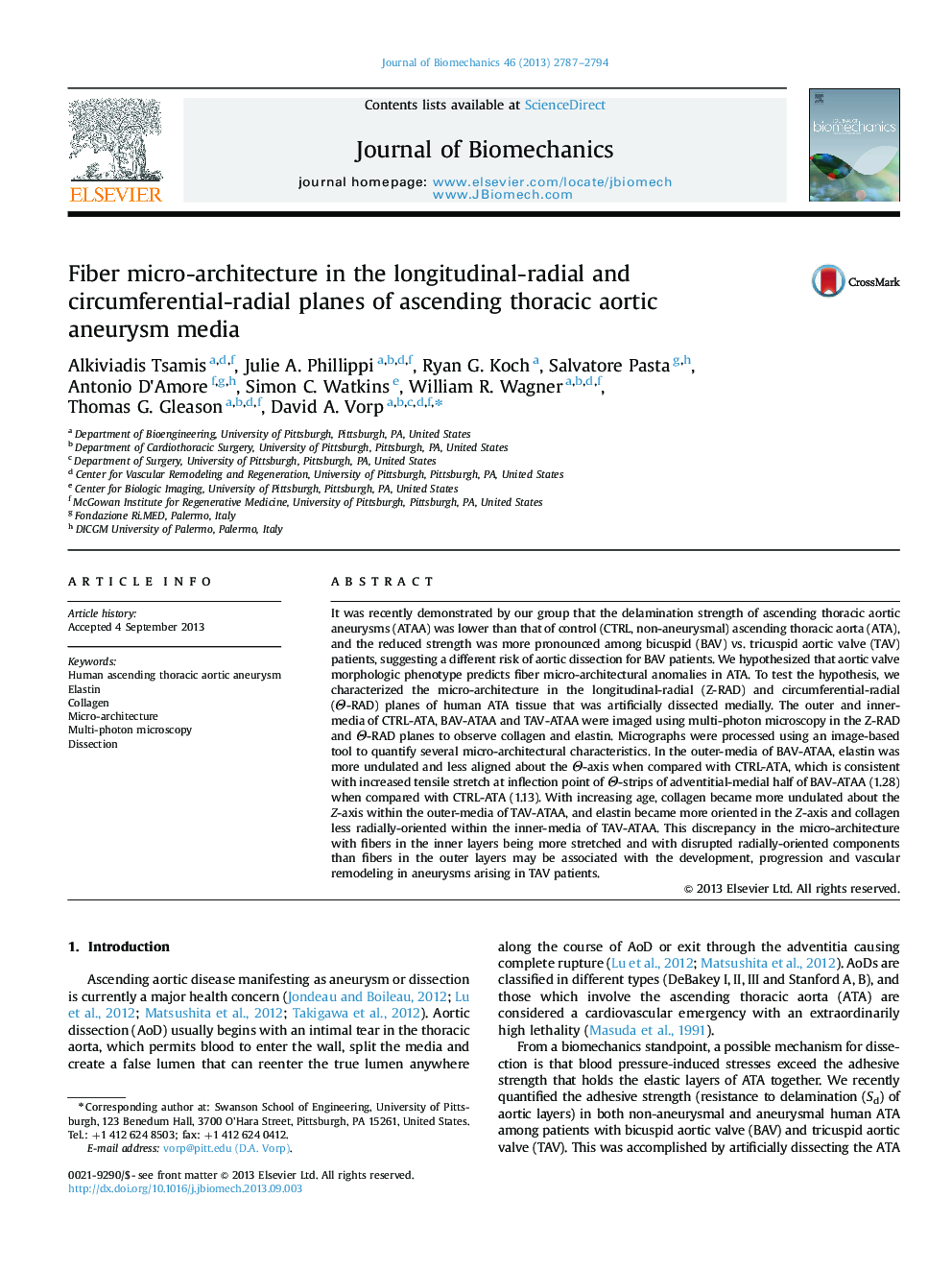| Article ID | Journal | Published Year | Pages | File Type |
|---|---|---|---|---|
| 10431691 | Journal of Biomechanics | 2013 | 8 Pages |
Abstract
It was recently demonstrated by our group that the delamination strength of ascending thoracic aortic aneurysms (ATAA) was lower than that of control (CTRL, non-aneurysmal) ascending thoracic aorta (ATA), and the reduced strength was more pronounced among bicuspid (BAV) vs. tricuspid aortic valve (TAV) patients, suggesting a different risk of aortic dissection for BAV patients. We hypothesized that aortic valve morphologic phenotype predicts fiber micro-architectural anomalies in ATA. To test the hypothesis, we characterized the micro-architecture in the longitudinal-radial (Z-RAD) and circumferential-radial (Î-RAD) planes of human ATA tissue that was artificially dissected medially. The outer and inner-media of CTRL-ATA, BAV-ATAA and TAV-ATAA were imaged using multi-photon microscopy in the Z-RAD and Î-RAD planes to observe collagen and elastin. Micrographs were processed using an image-based tool to quantify several micro-architectural characteristics. In the outer-media of BAV-ATAA, elastin was more undulated and less aligned about the Î-axis when compared with CTRL-ATA, which is consistent with increased tensile stretch at inflection point of Î-strips of adventitial-medial half of BAV-ATAA (1.28) when compared with CTRL-ATA (1.13). With increasing age, collagen became more undulated about the Z-axis within the outer-media of TAV-ATAA, and elastin became more oriented in the Z-axis and collagen less radially-oriented within the inner-media of TAV-ATAA. This discrepancy in the micro-architecture with fibers in the inner layers being more stretched and with disrupted radially-oriented components than fibers in the outer layers may be associated with the development, progression and vascular remodeling in aneurysms arising in TAV patients.
Related Topics
Physical Sciences and Engineering
Engineering
Biomedical Engineering
Authors
Alkiviadis Tsamis, Julie A. Phillippi, Ryan G. Koch, Salvatore Pasta, Antonio D'Amore, Simon C. Watkins, William R. Wagner, Thomas G. Gleason, David A. Vorp,
